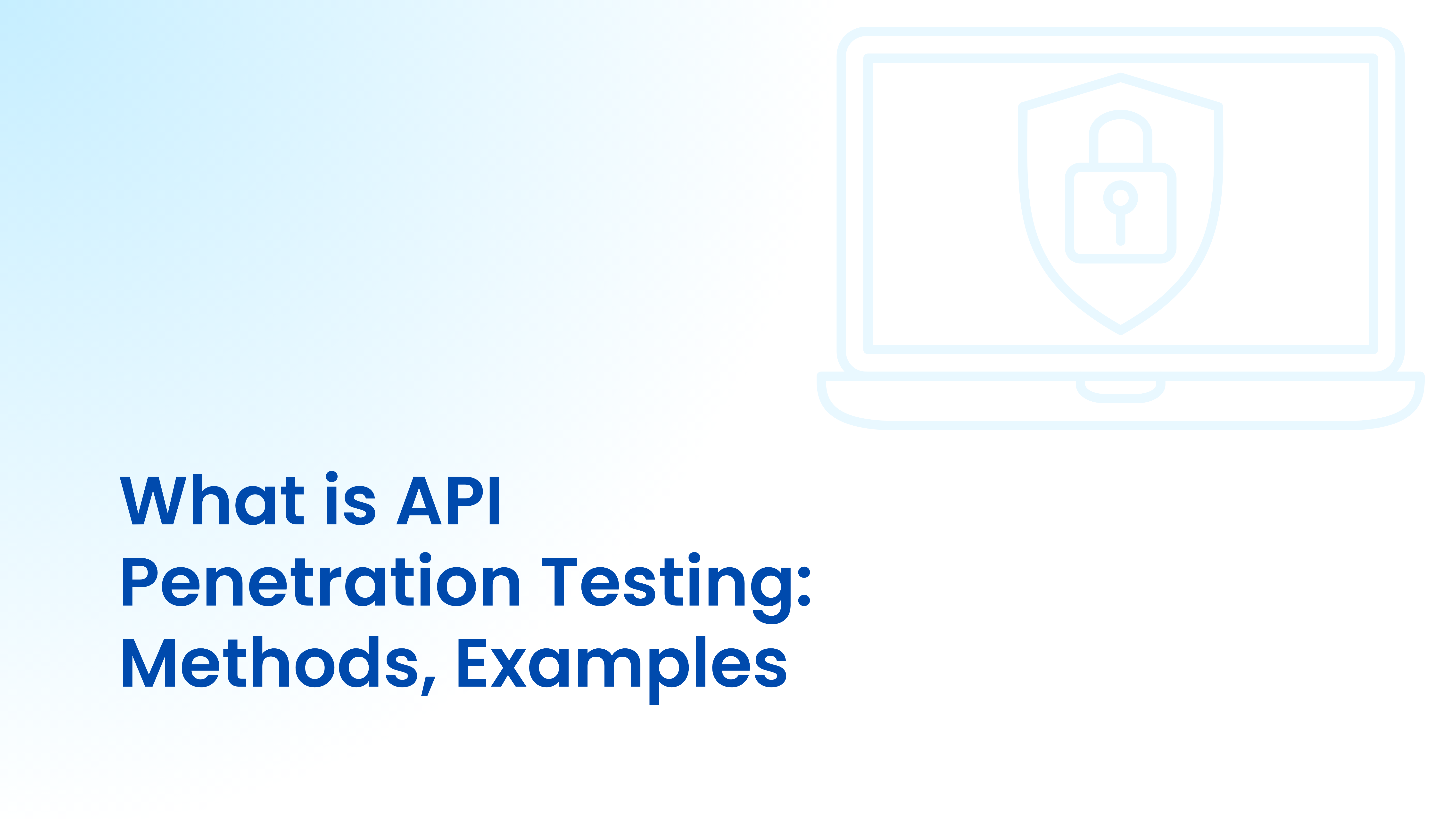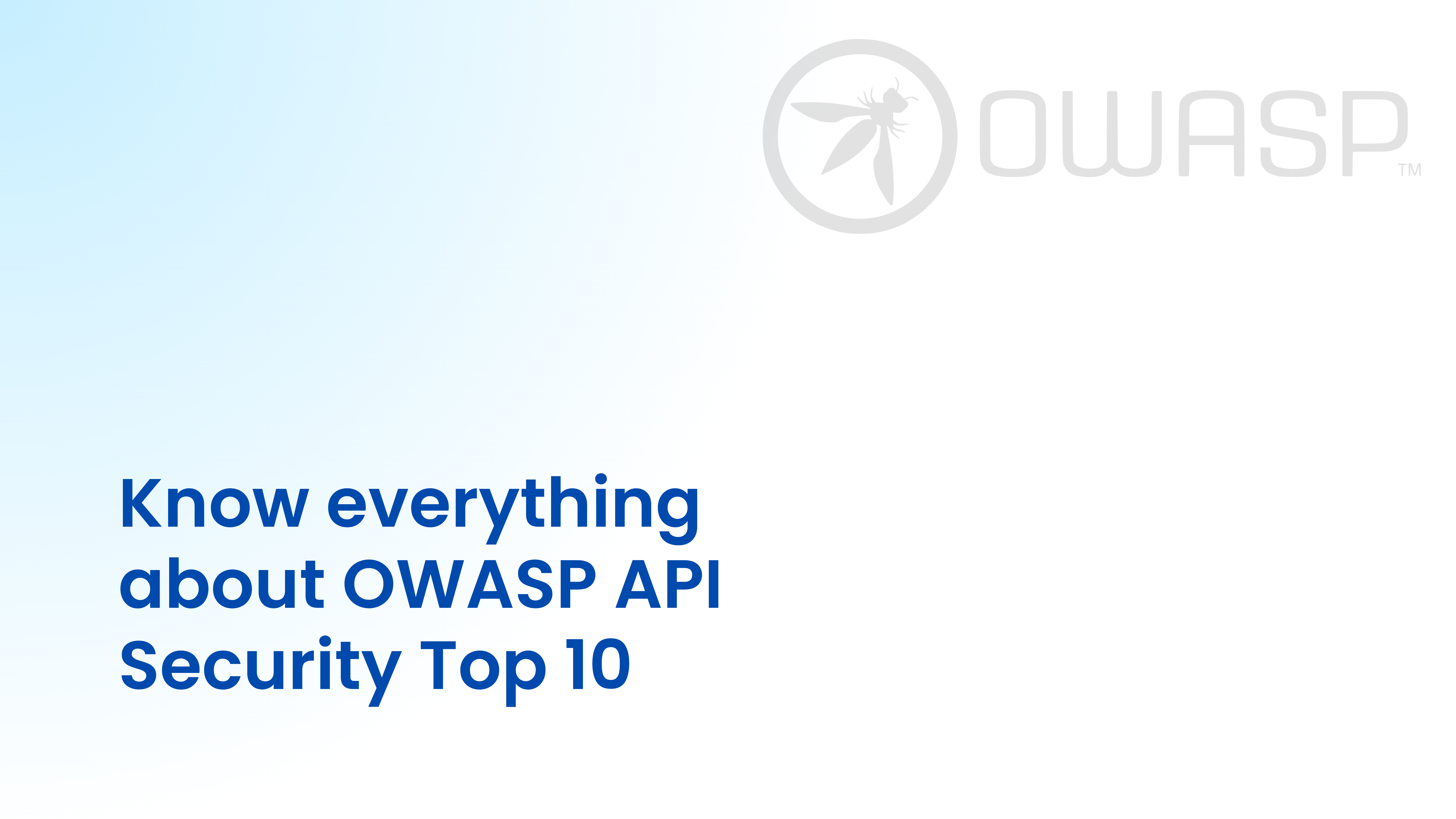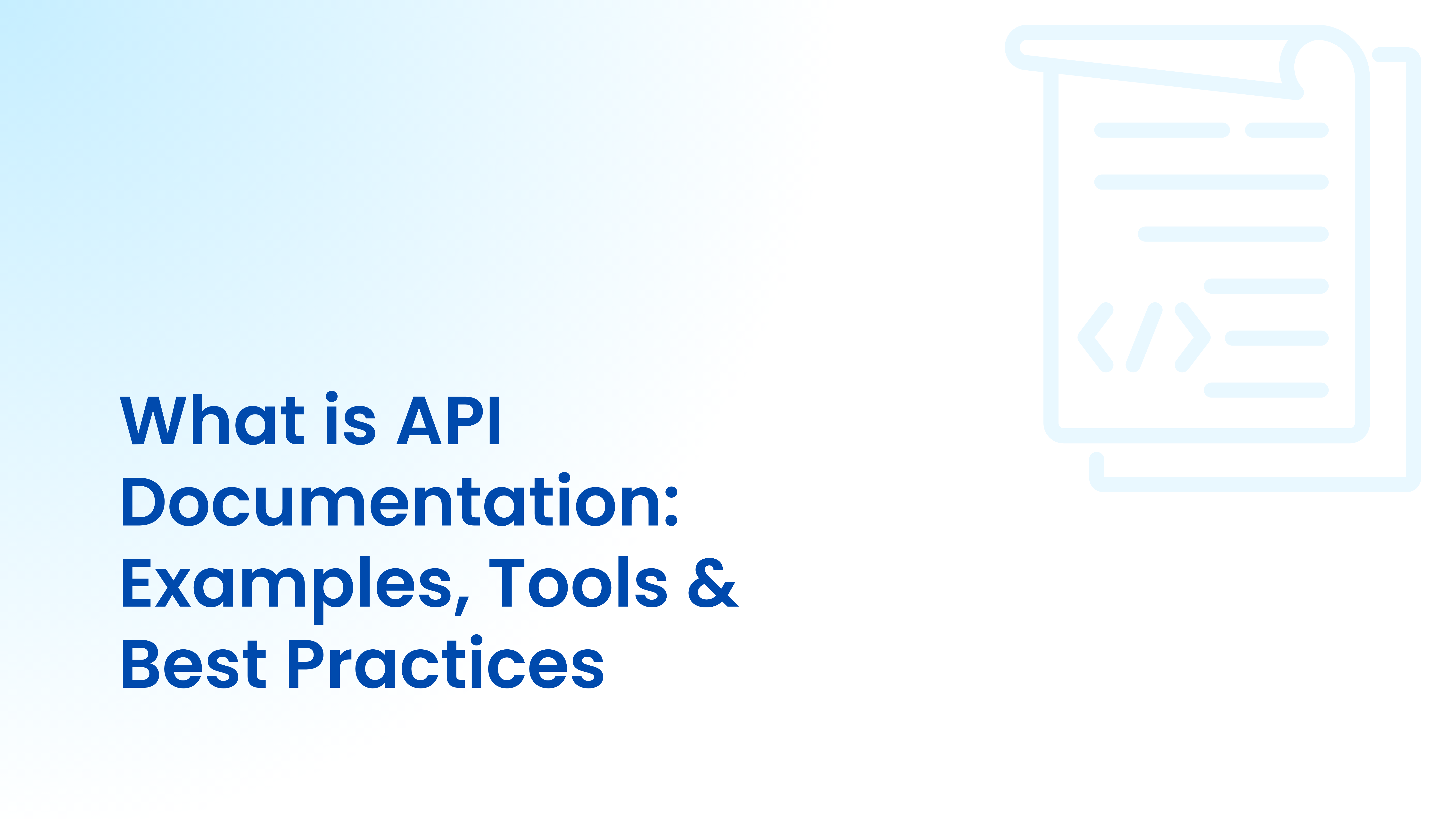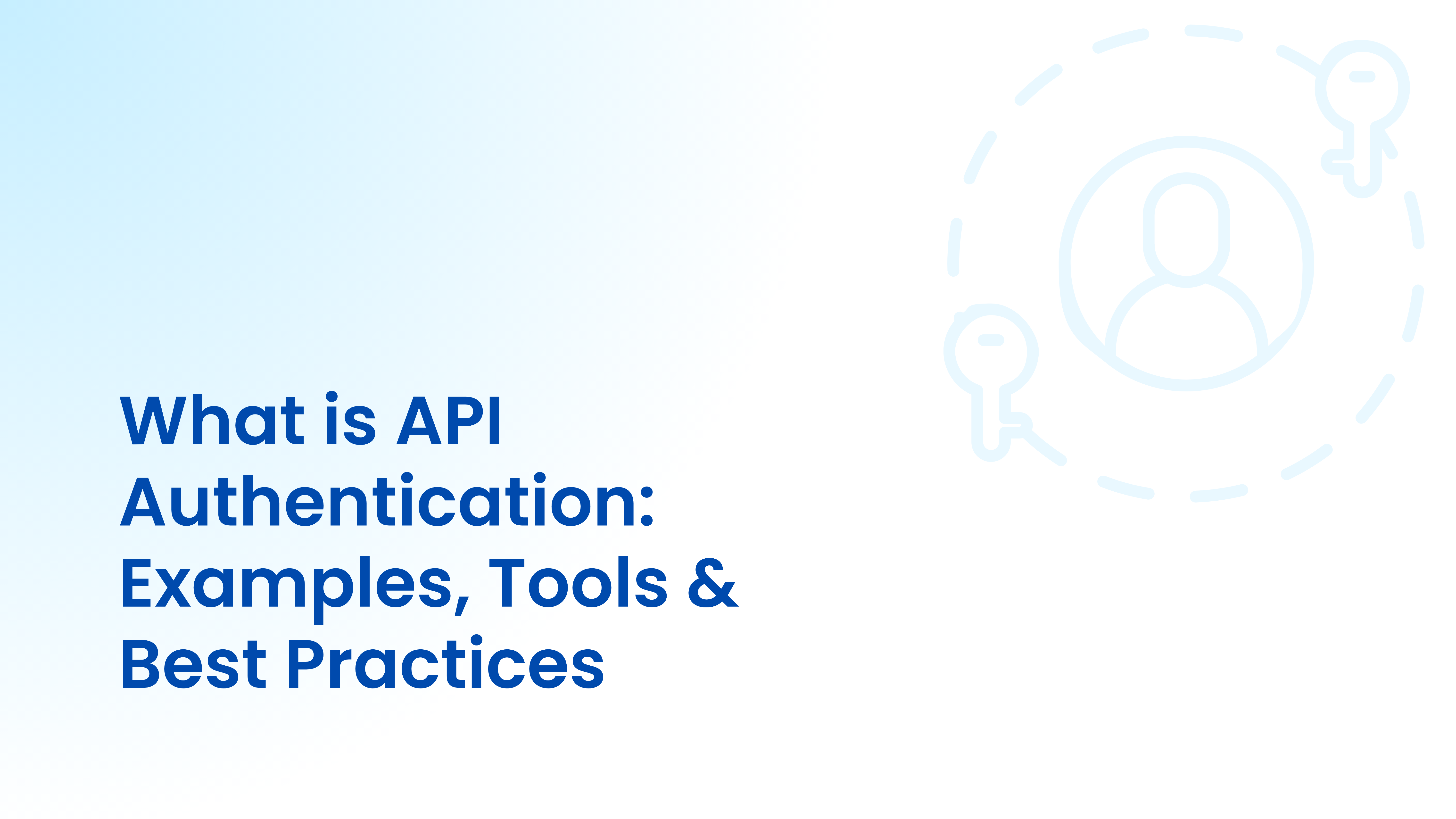What are API Documentation Tools?
API documentation tools help teams create, manage, and publish clear, interactive documentation for APIs. They translate complex endpoints, parameters, and workflows into OpenAPI specs and human readable formats that accelerate developer onboarding, integration, and collaboration.
Beyond static references, modern API documentation tools auto generate docs from code or traffic (such as OpenAPI, Swagger, or Postman Collections), ensuring real time accuracy as APIs evolve. They often include version control, code samples, and live “try-it” consoles, turning documentation from a maintenance burden into a core developer experience asset that drives adoption and reduces support overhead.
Why are API Documentation Tools Essential?
Static API docs no longer cut it. With APIs changing daily across CI/CD pipelines, over 70% of enterprises report their documentation is outdated within weeks of release, creating friction for developers, risk for security teams, and compliance blind spots for auditors.
Modern API documentation tools replace manual, error prone processes with live, traffic based documentation built directly from how APIs behave in production.
This real time source of truth documentation mirrors reality because it is built from it, not static code repositories or tribal knowledge. Each endpoint includes AI generated, human readable summaries that describe usage context and parent application behavior, making APIs instantly understandable to developers, testers, and compliance teams.
The result is documentation that is:
- Always current with every code commit or deployment.
- Ecosystem ready, exporting seamlessly in OpenAPI and Postman formats.
- Multi protocol aware, covering REST, GraphQL, gRPC, and SOAP.
- Passive and agentless, introducing zero latency or production risk.
API documentation tool shifts documentation from a maintenance burden to a strategic growth enabler, fueling faster partner onboarding, security testing, and API monetization.
With an efficient API documentation tool, documentation becomes not just descriptive but operational: powering visibility, compliance, and API security testing without slowing down development velocity.
When to use API Documentation Tools?
API documentation tools become essential the moment your API ecosystem starts to scale or change rapidly. When teams ship multiple services weekly, migrate to microservices, or integrate third party APIs, manual documentation can’t keep pace with CI/CD velocity.
The result is inconsistent, outdated, or missing specs that slow down onboarding, testing, and compliance audits.
Organizations should use API documentation tools when:
- APIs evolve frequently, and manual updates cause delays or inaccuracies.
- Multiple teams (Dev, Sec, Ops, Compliance) depend on a single source of truth for visibility and API governance.
- Shadow or legacy APIs exist without documentation, creating risk and integration gaps.
- Compliance frameworks like PCI, DPDP, and ISO 27001 mandate asset and data flow documentation.
What to look for when choosing API Documentation Tools?
The right API documentation tool should not only generate clean, developer-friendly docs but also ensure accuracy, automation, and ecosystem readiness. As APIs become the foundation of enterprise systems, documentation must evolve from static text to a continuously updated reflection of production reality.
Enterprises that prioritize these capabilities turn API documentation into a live, collaborative system of record fuels faster integrations, secure development, and real time governance.
Key factors to consider include:
1. Traffic Based Spec Generation
Look for tools that generate OpenAPI or Postman specs from live API traffic, not just code. This ensures documentation mirrors real world behavior, including undocumented or dynamically generated endpoints.
2. Automation and Real Time Updates
Choose a platform that syncs automatically with each deployment or code change. Manual updates introduce drift and break CI/CD alignment.
3. Spec Enrichment and Metadata Depth
Every endpoint should include comprehensive details such as methods, status codes, rate limits, error patterns, auth details, and changelogs for true operational context.
4. Human Readable AI Summaries
Certain Tools like Levo use GenAI to generate readable summaries, eliminating dependency on tribal knowledge or developer handoffs.
5. Zero Performance Overhead
Documentation should be passively captured using eBPF or agentless instrumentation, avoiding any latency or risk to production systems.
6. Multi Protocol Support
Ensure the tool supports REST, GraphQL, gRPC, and SOAP to avoid visibility gaps across diverse architectures.
7. Compliance and Security Integration
Documentation should double as a compliance enabler, providing audit ready visibility for frameworks like SOC 2, HIPAA, PCI, or ISO 27001, and feeding into security testing tools automatically.
8. Centralized Access and Sharing
Opt for platforms with a searchable, shareable documentation portal accessible to developers, testers, and compliance teams across environments.
Top 10 API Documentation Tools in 2025
Here are the top 10 API documentation tools for 2025. These platforms were chosen for their ability to automate documentation, keep specs accurate, and meet the needs of modern enterprises. Unlike old static docs, these tools offer live, interactive, and always up to date documentation that reflects how APIs actually work in the real world, supports fast-moving development, and helps with compliance.
1. Levo.ai
Overview:
Levo.ai redefines API documentation by generating OpenAPI and Postman specs directly from real production traffic using eBPF based instrumentation. Each endpoint is auto discovered and auto documented with live metadata, methods, request/response bodies, status codes, rate limits, and auth details, creating the most accurate, up to date specs possible.
Integrations:
GitHub, GitLab, Jenkins, Jira, AWS API Gateway, AWS Fargate, Akamai Edge-worker, Slack, Postman, Burp Suite.
Pros:
- Traffic based documentation built from real behavior.
- AI generated summaries for instant comprehension.
- Zero latency, agentless instrumentation.
- Continuous updates aligned with CI/CD.
Cons:
- Newer entrant compared to traditional doc generators.
Features:
- eBPF-powered passive capture.
- Multi protocol support (REST, GraphQL, gRPC, SOAP).
- Spec enrichment with 12+ metadata parameters.
- Centralized, searchable documentation portal.
Pricing:
Custom enterprise pricing, TCO typically 1/10th of competitors’ cost due to negligible cloud and human overhead.
G2 Rating:
2. Postman
Overview:
Postman remains a leading platform for API documentation, testing, and collaboration. It allows teams to publish interactive, auto generated documentation from collections and directly integrate with CI/CD workflows.
Integrations:
GitHub, Bitbucket, Jenkins, AWS, Azure, GCP.
Pros:
- Easy to use interface for developers and testers.
- Built in “try-it” console for real time testing.
- Excellent ecosystem for sharing public APIs.
Cons:
- Manual updates required for production drift.
- Limited runtime visibility into undocumented APIs.
Features:
- Auto generated API docs from Postman Collections.
- Collaboration and version control.
- Public API portal for sharing.
Pricing:
Free tier; paid plans start from $14/user/month.
G2 Rating:
3. SwaggerHub (SmartBear)
Overview:
SwaggerHub enables centralized OpenAPI documentation and design collaboration. It’s ideal for teams standardizing API specs across large organizations, integrating with developer portals and code generators.
Integrations:
GitHub, Jenkins, Azure DevOps, Redocly.
Pros:
- Strong OpenAPI editing and validation.
- Centralized governance for large teams.
- Integration with Swagger UI for visualization.
Cons:
- Requires manual syncing with runtime APIs.
- Limited support for non-OpenAPI protocols.
Features:
- OpenAPI based documentation and design.
- Role based access control.
- Built-in collaboration features.
Pricing:
Starts at $75/month per team.
G2 Rating:
4. Redocly
Overview:
Redocly offers a modern, customizable API documentation experience with a focus on branding and UX. It uses OpenAPI specs to generate responsive, interactive docs ideal for developer portals.
Integrations:
GitHub, GitLab, AWS, Azure, Vercel.
Pros:
- High quality, developer friendly presentation.
- Supports markdown and custom branding.
- SEO optimized documentation.
Cons:
- Does not auto generate specs from traffic or runtime.
Features:
- Advanced theming and content control.
- Multi spec documentation portals.
- Git based publishing pipeline.
Pricing:
From $70/month.
G2 Rating:
5. Stoplight
Overview:
Stoplight provides collaborative API design and documentation tools using OpenAPI standards. It helps teams model, mock, and publish API docs from a single platform.
Integrations:
GitHub, GitLab, Azure DevOps, AWS.
Pros:
- Combines design first and documentation first workflows.
- Mock servers for pre release testing.
Cons:
- Limited runtime sync; specs must be manually updated.
Features:
- Visual API editor and style guide enforcement.
- Auto generated interactive documentation.
- Team collaboration tools.
Pricing:
Free for individuals; team plans from $25/user/month.
G2 Rating:
6. ReadMe
Overview:
ReadMe transforms static documentation into dynamic developer experiences with personalized, interactive portals. It integrates with APIs to deliver live examples and usage analytics.
Integrations:
GitHub, Slack, Zapier, Segment.
Pros:
- Developer-centric UI and analytics.
- Personalized docs with real API data.
Cons:
- Requires API key configuration for interactivity.
Features:
- Interactive console with live responses.
- Versioned documentation and usage tracking.
Pricing:
From $99/month.
G2 Rating:
7. Docusaurus
Overview:
An open source static site generator from Meta, Docusaurus helps teams build and maintain beautiful API documentation sites integrated with Git.
Integrations:
GitHub, Netlify, Vercel.
Pros:
- Fully customizable and open source.
- Great for internal documentation.
Cons:
- No automated spec generation or updates.
Features:
- Markdown based docs with React components.
- SEO friendly, versioned docs.
Pricing:
Free (open source).
G2 Rating:
N/A
8. Apimatic
Overview:
Apimatic focuses on developer experience, automatically generating SDKs and API documentation from OpenAPI specs. It ensures consistency between code and documentation.
Integrations:
GitHub, Jenkins, AWS, Azure.
Pros:
- SDK generation for multiple languages.
- Consistent doc code synchronization.
Cons:
- Requires complete, accurate specs as input.
Features:
- Auto generated SDKs and interactive docs.
- Developer onboarding automation.
Pricing:
Custom enterprise pricing.
G2 Rating:
N/A
9. Slate
Overview:
Slate is an open source static API documentation generator known for its simple, elegant design. It’s developer friendly but requires manual updates.
Integrations:
Git-based workflows.
Pros:
- Clean layout and responsive design.
- Simple deployment.
Cons:
- Manual updates and limited automation.
Features:
- Markdown based documentation.
- Code sample highlighting.
Pricing:
Free (open source).
G2 Rating:
10. GitBook
Overview:
GitBook is a documentation platform used for both API and product documentation. It integrates with Git for version control and offers collaborative editing.
Integrations:
GitHub, Slack, Figma, Notion.
Pros:
- Intuitive UI with real time collaboration.
- Great for mixed technical and non technical audiences.
Cons:
- Limited API specific features.
Features:
- Real time collaborative editing.
- Git backed version control.
- Custom domains and branding.
Pricing:
Free tier available; business plans from $6.70/user/month.
G2 Rating:
Benefits of Using API Documentation Tools
Over 80% of integration delays and 40% of API vulnerabilities stem from incomplete or outdated documentation. Automated API documentation is now critical for accuracy, security, and developer velocity. Modern tools turn documentation into a living, continuous asset that mirrors production reality.
- Mirror Reality, Not Assumptions: Generate OpenAPI and Postman specs directly from live traffic using kernel level eBPF capture. Every endpoint is documented as it behaves in production, improving accuracy by up to 95% and eliminating drift.
- Eliminate Manual Overhead: Automate spec generation and updates to reclaim 30–50% of developer hours spent on maintenance, accelerating delivery without adding headcount.
- Accelerate Integration and Monetization: Complete, always-current documentation cuts partner onboarding time by up to 40%, directly improving integration speed and API revenue growth.
- Maintain Real Time Accuracy: Automatically regenerate specs with every commit or deployment to eliminate the 20–30% drift that plagues manual documentation.
- Strengthen Security and Compliance: Accurate, machine readable specs ensure audit readiness for PCI, DPDP, HIPAA, and ISO 27001, reducing audit prep time by up to 60%.
- Full Coverage, Zero Performance Impact:
Document internal, external, and legacy APIs through agentless, out of band capture with no latency or code changes. - Human Readable by Design:
Levo’s GenAI engine creates natural language summaries for every endpoint, removing dependency on code walkthroughs and tribal knowledge. - Enable Continuous Security Testing:
Accurate specs make every endpoint testable by default, reducing unverified APIs and hidden attack surfaces by up to 70%. - Centralized, Shareable Access:
Provide a single, searchable documentation portal accessible to Dev, Sec, and Compliance teams for unified visibility and governance. - Reduce Technical Debt:
Continuously updated specs prevent outdated documentation, minimizing compliance risk and operational inefficiency across growing API ecosystems.
Conclusion: Why Levo.ai is the Right Tool for API Documentation in 2025
APIs now power over 90% of digital interactions, yet most organizations still rely on manual, outdated documentation that lags behind their CI/CD velocity. Static specs and code based docs can’t keep up with dynamic, multi-environment deployments, creating friction for developers, blockers for partners, and blind spots for security. In 2025, real time, traffic based documentation is no longer a luxury, it’s a necessity.
Levo.ai redefines API documentation by generating OpenAPI and Postman specs directly from live traffic using eBPF-based OS-level instrumentation. Each spec captures every parameter, status code, and authentication detail as the API behaves in production with no agents, no latency, and no manual upkeep.
While traditional tools depend on developer input or static definitions, Levo creates documentation that mirrors reality, continuously updated, enriched with live metadata, and accessible across environments. With natural-language summaries generated by GenAI, teams gain both technical precision and business context in every spec.
This approach transforms documentation from an afterthought into a strategic control layer:
- Development: Eliminates manual updates and keeps docs aligned with CI/CD velocity.
- Integration: Accelerates partner onboarding and third-party reuse through always accurate specs.
- Security: Ensures every endpoint is testable from day one, reducing hidden risk.
- Compliance: Automates documentation required for PCI, DPDP, HIPAA, and ISO 27001 readiness.
Levo.ai shifts API documentation from static reporting to live intelligence, a continuous, source of truth system that empowers developers, security, and compliance teams alike.
Automate documentation that mirrors your APIs in real time.
Book your demo today to make API accuracy, compliance, and scalability effortless.


.png)




